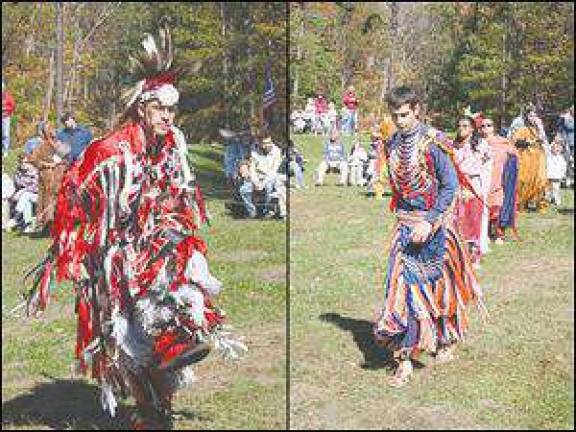Lenape return to the Delaware

DINGMANs FERRY - There was a powwow at the Pocono Environmental Education Center this past weekend. So, what’s a powwow? “Powwow’s are a way to raise cultural awareness of indigenous people,” said Chuck Demund Chief of the Lenape Nation. Demund, who lives in Gilbert, Pa., works as a diner cook when he isn’t participating in one of the many powwow’s that take place around the country. “Powwow’s are an all-year-round event but in the northeast they generally start in May and continue through October. We try to help each other as much as we can. There will be anywhere between 300 and 400 Lenape Indians here this weekend,” he said. Powwows feature Indian crafts, foods, but are best known for their colorful dancing and ritual music. (While the term Native American is often used, the folks we’ve met at powwows usually refer to themselves as Indians.) There were 12 and 15 booths set up offering Native American handmade goods. Anything from colorful “dream catchers,” authentic Indian music on cds, animal skins, Indian jewelry, and deer antlers were on sale. Bart Standing Elk (Bart Cartwright) of Yardley, Pa., was the lead dancer and wore a colorful, handmade outfit adorned with feathers, leather ties, and bells. In his regular day-to-day working life Standing Elk is a carpenter, building homes for a living. Standing Elk led most of the dancers as they performed their dances to the deep beat of hand made drums and the high pitched cries of Lenape singers. Demund began the day’s festivities with a formal display of the U.S. flag, the P.O.W./M.I.A. flag and the Lenape Indian Nation flag. The flags, carried by several Indian Vietnam vets, were marched into the “dance ring.” Demund had everyone stand while he honored those that served our country, both Indian and others. The Lenape national anthem was played and sung in native Lenape language. Many colorful Indian dancers performed a myriad of Indian ritual dances as several Indians played the drums and sang in native American tongue. One of the oldest Lenape was Duke Simmons, 72, of Seneca, N.Y., a retired welder fabricator. Simmons wore a bright blue Indian outfit covered with white feathers. In spite of his age, Simmons was an active participant in all the dances. The Lenape Indians represented four Indian nations: the Sand Hill Band of Lanape, the Ramapough Lenape, the Nanticoke Lenape, and the Lenape Nation of northeast Pa., Pike and Monroe counties. Lenape Nations, sometimes called Delawares, come from northern Delaware, western N.Y., N.J., and eastern Pa. and once were predominant in the Delaware Valley.